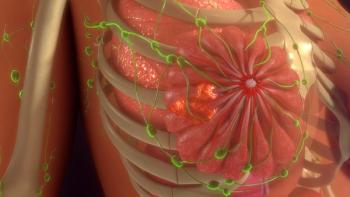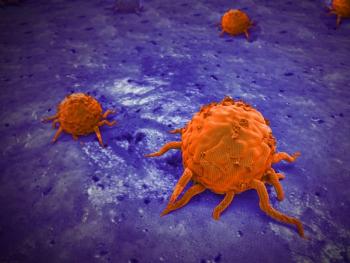
Considerations After Initial CDK4/6 Inhibition in HR+/HER2– Breast Cancer
Following progression on a CDK4/6 inhibitor, ascertaining the endocrine sensitivity of HR-positive/HER2-negative disease may inform sequential treatment.
Two factors guide what Jade E. Jones, MD, considers for subsequent lines of therapy following progression on first-line CDK4/6 inhibitors among patients with hormone receptor (HR)–positive/HER2-negative breast cancer: the length of first-line therapy and the burden of one’s disease.
In a conversation with CancerNetwork®, Jones, assistant professor in the Department of Hematology and Medical Oncology at Emory University School of Medicine and medical oncologist at the Emory Winship Cancer Institute, discussed treatment decision-making strategies for this patient population in later lines of therapy following progression on CDK4/6 inhibition.
Jones explained that her institution initially assesses a patient’s endocrine sensitivity or resistance before deciding whether to introduce treatment with antibody-drug conjugates (ADCs) or chemotherapy, expressing that patients prefer endocrine therapy due to its oral administration, better tolerability, and availability at home.
Additionally, she suggested that a treatment duration of 6 months or less was associated with a lower likelihood of response to subsequent endocrine therapy. Moreover, in patients with a higher burden of disease, she considers the use of ADCs or chemotherapy, with a preference for ADCs due to the possibility of endocrine resistance and time-related concerns. She concluded by expressing that she considers whether alternative endocrine therapies would benefit a patient before switching to different types of treatment.
Transcript:
When we’re talking about after a patient comes off their first-line therapy with a CDK4/6 inhibitor plus endocrine therapy, [the question] is, “Are they endocrine sensitive, or are they endocrine resistant?” Most patients like being on endocrine therapy options over chemotherapy and even over ADCs, and that’s because, in general, they tend to be better tolerated [and] most of them are oral and require the patient to be at home more often than being in the infusion center.
My real decision [includes] 2 things I factor in. One, how long was the patient on their first-line therapy? We have multiple trials that show if you’re only on endocrine therapy for 6 months or less, then [you’re] likely not going to [respond] to the next line of endocrine therapy and you tend to have a more aggressive disease. The other [factor] is the burden of disease––[does] this patient [have] a large volume of disease, and [are they] not even on the endocrine therapy [for] that long?
[For] that aspect, I probably need to switch over to a chemotherapy or ADC option, more likely an [ADC] because the patient may not have a lot of time to figure out if they’re going to respond and they may be endocrine resistant. My main focus is how long they were on that endocrine therapy and [whether] I think other forms of endocrine therapy would benefit that patient. [Those] are my main decision makers.
Newsletter
Stay up to date on recent advances in the multidisciplinary approach to cancer.



















































































